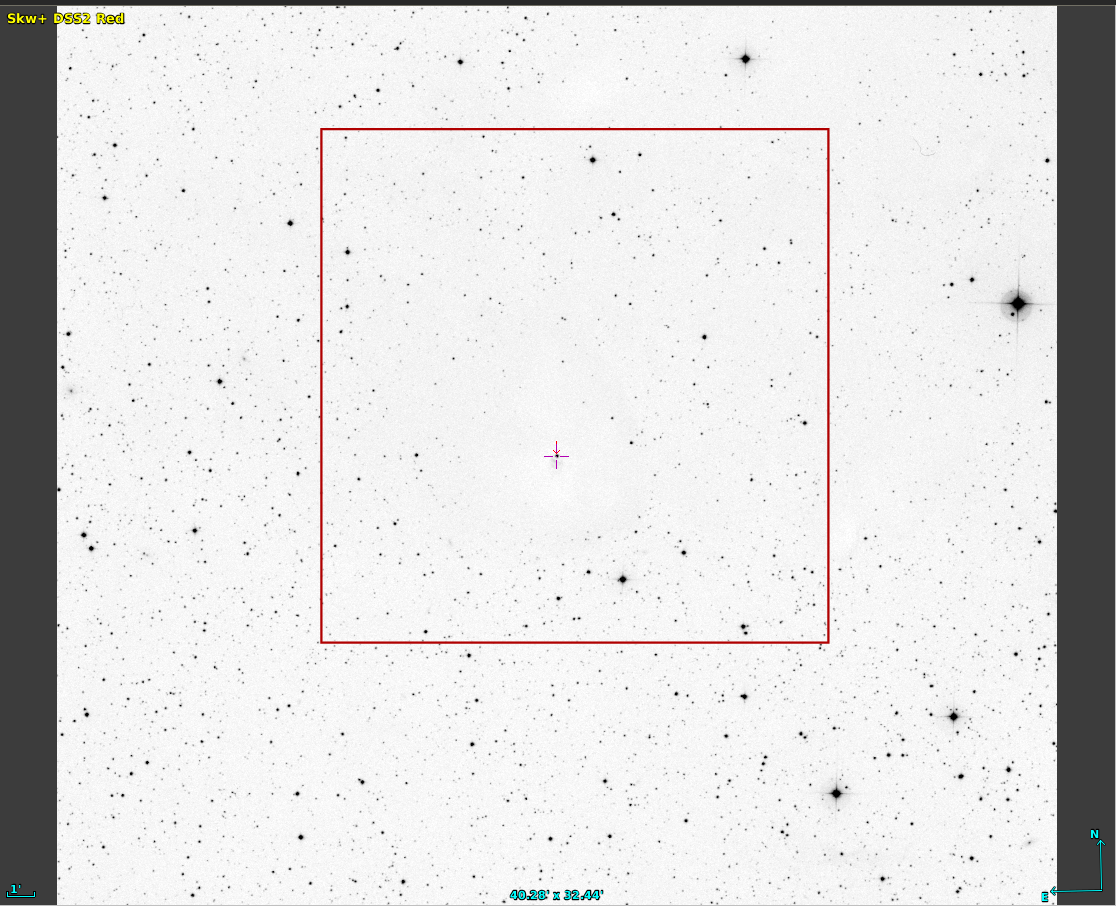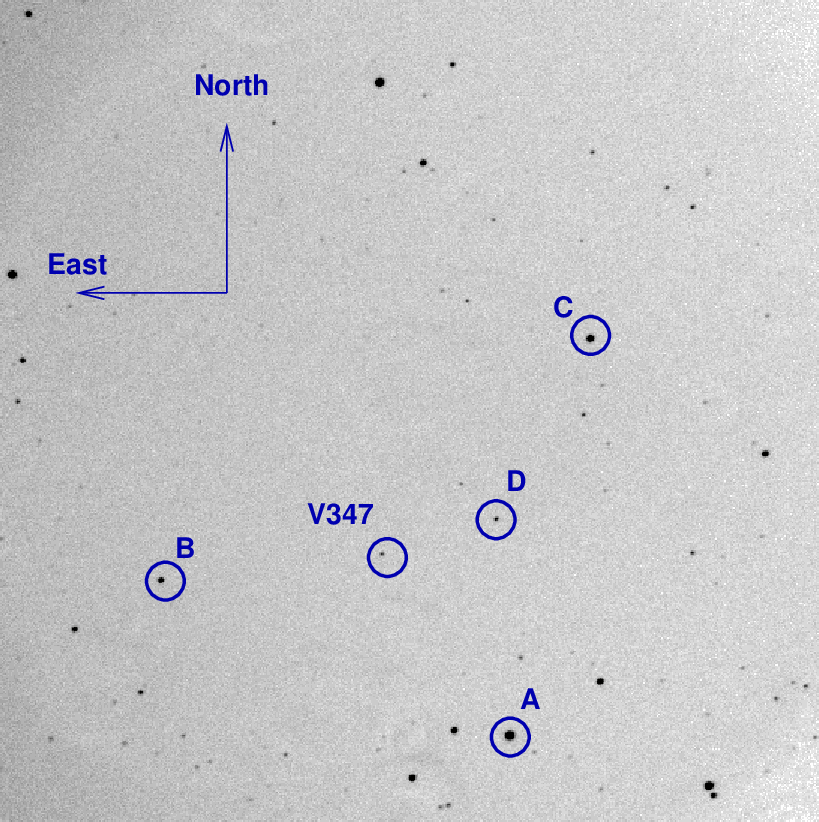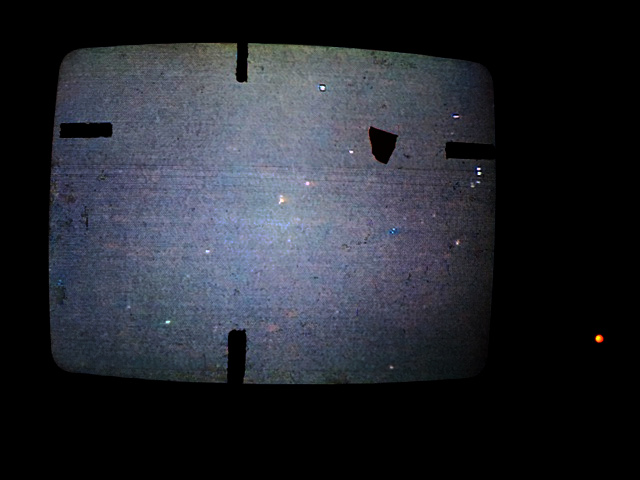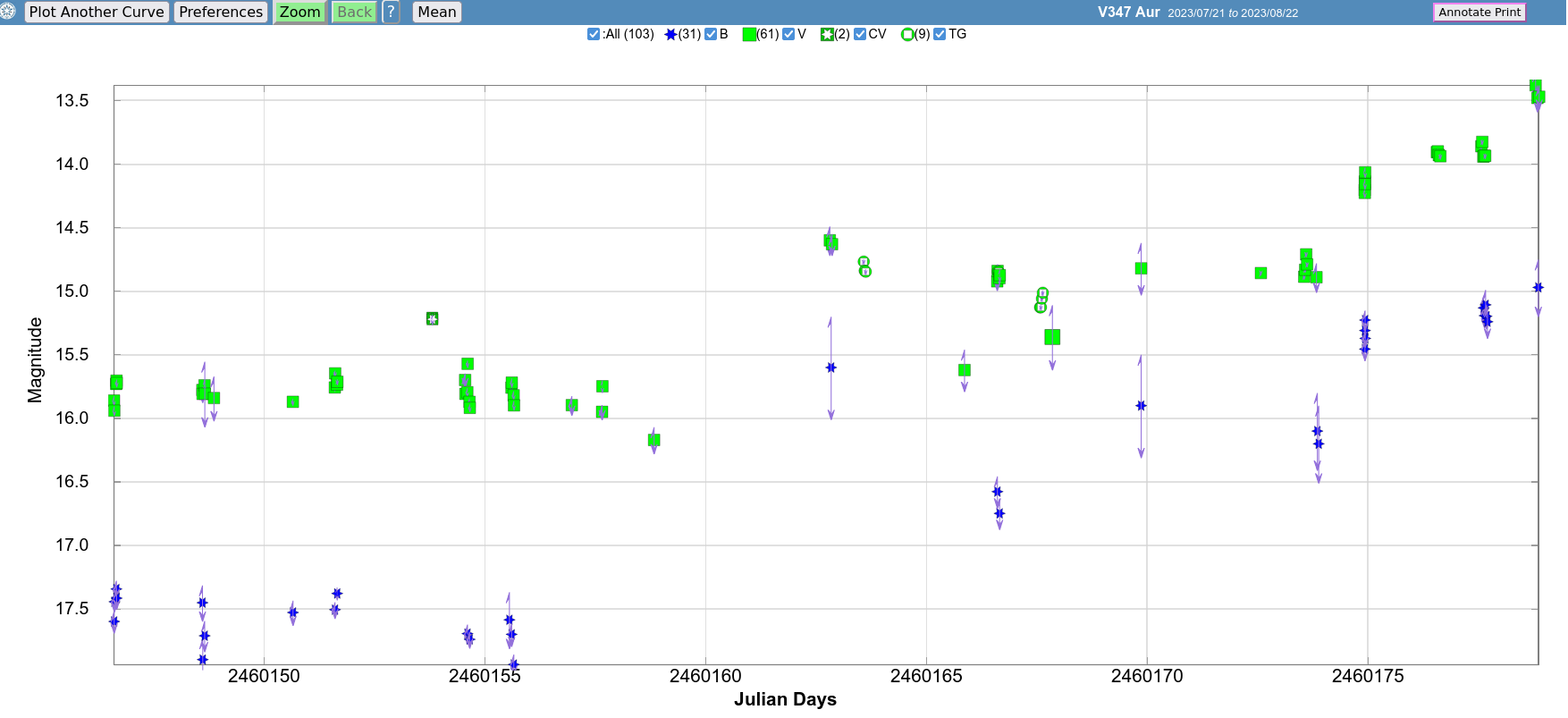
On the night of Aug 21/22, 2023, under very good conditions, I acquired images of V347 Aur as part of our optical monitoring program. All data was taken with the 12-inch telescope and ASI camera. The sky was mostly clear for these measurements.
The variable is at its brightest point so far in this outburst!
V347 Aur is a young stellar object (YSO) which undergoes semi-periodic outbursts. I'm part of a team of astronomers who have applied for (and received) time on the XMM-Newton X-ray telescope to study this object in the fall of 2023. We have organized an observing campaign with the AAVSO to monitor the object in the optical in order to determine when the outburst begins -- if it begins! Our prediction is some time in mid-August, 2023.
These observations involved:
Notes from the night:
The position of the variable star is
RA = 04:56:57.02 Dec = +51:30:50.9
At quiesence, it has magnitude V = 16-ish, but can rise to V = 12 in an outburst.
Here's a chart from the DSS2 Red plates, 0.6 degrees on a side.

The picture below, based on a stack of images taken on UT Jul 23, 2023, shows the area in the red box above. The variable is at its quiescent level in this image.

I've marked the location of several comparison stars.
star AAVSO ID B V ------------------------------------------------------ B 140 15.134 14.001 C 127 13.617 12.660 D 154 17.491 15.361 --------------------------------------------------------------------------
Here's a picture of the guider TV when pointed at the field (pointed slightly to the left of the variable, actually).

Tonight's stacks were formed from 57 x 20 sec, 60 x 20 sec, and 45 x 20 sec for V-band. I tried 51 x 20 sec and then 62 x 20 sec for B-band; the stack formed from the second set alone was better than one formed from all the images, due probably to the higher altitude of the second set. Even in the best B-band median images, I could barely detect star "D", used for calibration.
I reported the following to AAVSO:
JD filter mag
---------------------------------------------------
2460178.854 B 14.97 +/- 0.22
2460178.792 V 13.38 +/- 0.11
2460178.833 V 13.48 +/- 0.10
2460178.873 V 13.47 +/- 0.09
---------------------------------------------------
The variable is currently as bright as it has been during this outburst. The XMM-Newton satellite did acquire X-ray observations of the object two nights ago, which was just as we planned -- near the peak of the outburst. Hooray!
